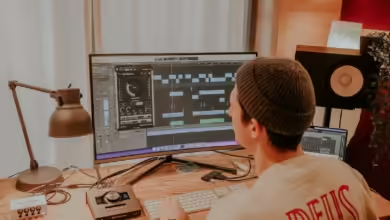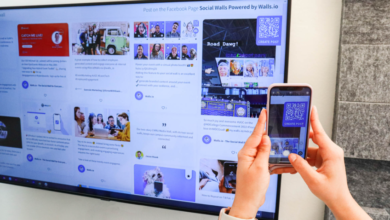Video That Respects Viewers: Hooks, Thumbnails, and Honest Payoffs

Great video doesn’t trick people into watching—it earns attention and rewards it. This guide distills practical craft for creators and publishers who want to grow without gimmicks: how to win the first five seconds, design thumbnails that tell the truth, structure stories for retention, and monetize without burning trust. If you want a pragmatic partner to help you set up a keepable publishing system, partnering with Best Solution of IT is a straightforward way to get structure without bloat.
1) The Five-Second Promise
Viewers decide fast. Your opening must answer: What is this? Why should I care now?
Checklist for your first five seconds
- Context in one line: “I tried three budget mics to find the quietest under $50.”
- Visible outcome: Show a quick preview of the end state (before/after, scorecard, reveal).
- Immediate movement: A cut, a prop, a gesture—motion signals momentum.
- Clean frame: No visual clutter competing with your face/hook.
- No throat clearing: Skip “Hey guys, welcome back.” Deliver value, then greet.
Practice filming five alternate hooks per video. Use the one that reads best on mute.
2) Thumbnails: Your Five-Second Billboard
Thumbnails earn the click; the video must earn the watch. Design for legibility on a small phone.
Rules that travel
- One subject, one emotion, one object. Faces help; so do hands pointing at real stakes (cracked phone, messy cable).
- Text ≤ 4 words and not a duplicate of the title.
- Contrasting edges so the subject doesn’t bleed into the background.
- Avoid deception. Don’t show products or outcomes that never appear.
- A/B ideas, not styles. Change concepts (shock vs. curiosity), not just colors.
Shoot thumbnail photos during production instead of extracting blurry frames later.
See also: Age Verification in Florida: Navigating New Laws and Technologies in 2025
3) Titles: Clarity Beats Clever
A title is a promise plus a frame. It should set expectations you can fulfill and signal the target audience.
Template bank
- Outcome + constraint: “Bake Sourdough in 3 Hours (No Starter)”
- Forced choice: “$299 vs $29 Tripod—Which Survives Wind?”
- Reveal: “I Fixed My Echoey Room with $0 (Here’s How)”
- Challenge: “I Edited an Entire Video With Only Keyboard Shortcuts”
Avoid stuffed keywords; choose the phrase a human would say out loud.
4) Story Structures That Keep People Watching
Don’t improvise your way into dead air. Use simple scaffolds:
- ABT (And–But–Therefore): “We set up X and expected Y, but Z blocked us, therefore we did A.”
- Problem → Options → Choice → Result: Show the fork, make a call, reveal the outcome.
- Mystery: Pose a specific question early (“Which mic actually ignores AC hum?”) and return to it often.
Every 20–40 seconds, deliver a micro-payoff—a discovery, a laugh, a number. Retention dips when viewers wait too long for progress.
5) Audio First, Always
Viewers tolerate soft focus; they bounce on bad sound.
Golden path
- Record in the quietest room; turn off fans/AC if possible.
- Place the mic near the mouth; reduce echo with textiles, curtains, or a duvet outside the frame.
- Watch levels (-12 to -6 dB peaks).
- Add a short room tone bed to hide cuts.
- Prioritize intelligibility over loudness; avoid aggressive noise gates that chop syllables.
If you can upgrade only one thing this year, upgrade your audio chain.
6) Editing: Cut for Intent, Not for Speed
Fast cuts aren’t the goal; purposeful cuts are.
Edit checklist
- Cut when meaning changes (new step, new angle, new idea).
- Hide the cut in action (a hand movement, a turn).
- Trim pre- and post-roll on clips; the cursor should move like a broom.
- Use b-roll for proof, not decoration. Show the step you describe.
- Rhythm resets every 60–90 seconds (a diagram, a joke, a test).
Keep a “kill reel” for cut ideas that might become shorts later.
7) Visual Design That Carries, Not Clutters
- Typography: One display font for headings, one clean sans for labels. Big enough for small screens.
- Color: Use a restrained palette; contrast for readability.
- Lower thirds: Brief, consistent position; avoid stacking three layers of text.
- Framing: Rule of thirds is training wheels; once steady, break it when intent demands.
- Lighting: One key light, one fill (or a bounce), and a small back light separates subject from background.
When in doubt, remove one element. Breathing room looks like confidence.
8) Accessibility Is Growth
Accessibility expands your audience and improves watch time.
- Captions (not auto-only) help non-native speakers and noisy environments.
- Descriptive alt in overlays and spoken descriptions for critical visuals.
- Contrast and font size tuned for small displays.
- Avoid “color-only” meaning (e.g., red = bad) without labels.
Make accessibility part of your definition of done, not a later fix.
9) Honest Payoffs (and the Anti-Cliffhanger Rule)
Your opening promise is a contract. Deliver the answer before your endscreen; don’t hide it behind credits or “like and subscribe.”
Anti-cliffhanger rule: If a viewer leaves two minutes before the end, they should still feel complete. Use the final minute to add bonus context, alternatives, or “what we’d do differently.”
10) Packaging and Metadata That Help, Not Game
- Description: Lead with a one-sentence summary; then a time-stamped outline.
- Chapters: Functional names, not jokes—viewers scrub by task.
- Tags/categories: Use as intended; they help discovery but won’t rescue weak packaging.
- End screens: Offer one next best video, not a grid of four random picks.
- Pinned comment: Clarify the main takeaway; answer the top objection you anticipate.
Treat metadata like signage in a store: obvious and useful.
11) Publishing Cadence You Can Keep
Consistency outperforms intensity. Pick the rhythm your life supports.
Calm cadence
- Weekly: one main video (6–12 minutes).
- Biweekly: a short or clip from the main.
- Monthly: one “evergreen” pillar (tutorial, guide, or teardown).
- Quarterly: refresh top performers with new data, prices, or examples.
Batch production: script three, shoot two, edit one. Momentum survives bad Tuesdays.
12) Analytics That Change Behavior
Dashboards are mirrors; pick the ones that tell you what to change.
- CTR (click-through rate): Packaging health (title/thumbnail).
- APV (avg. percentage viewed): Story pacing and clarity.
- First 30s retention: Hook quality; fix intros before anything else.
- Top drop-off timestamps: Find dead air or confusion; re-cut or reshoot those segments.
- Traffic sources mix: Ensure you have search + suggested + external; diversify to avoid fragility.
Run one experiment at a time for two weeks: title concept, thumbnail concept, or hook wording—not all three.
13) Community That Feels Like a Room, Not a Shout
- Comment prompts: Ask a specific question at the end; generic asks get generic replies.
- Moderation: Pin guidelines; remove bad-faith bait; reward thoughtful answers.
- Corrections in public: If you missed, fix the description, add a pinned update, and thank the viewer who caught it.
- Member features (if you offer them): Give access or behind-the-scenes, not paywalled basics.
Treat comments as co-writing; great threads improve the video for everyone who watches later.
14) Monetization Without Burning Trust
- Ads & sponsors: Align with the video’s actual problem. Keep spots concise; disclose clearly.
- Affiliates: Recommend what you use on camera; show the result, not just the link.
- Own products: Templates, presets, or mini-courses that extend the value of the video.
- Services: Clear entry points (audits, edits, coaching) with outcomes and boundaries.
If a monetization tactic would embarrass you on a stage, don’t ship it in your video.
15) Rights, Music, and Legal Hygiene (Briefly)
- Use licensed or original music. Levels duck under voice; avoid attention-stealing hooks under dialogue.
- Footage you didn’t shoot: Use when you have rights or a defensible fair-use case; add commentary, transformation, and restraint.
- Releases: If private individuals are identifiable and central, get consent where feasible.
- Disclose material relationships (gifts, loans, sponsorships).
Good paperwork is unglamorous and priceless.
16) Lightweight Production Kit That Punches Above Its Weight
- Camera: The one you’ll use; phones are fine with manual exposure lock.
- Support: Stable tripod; a mini-tripod for desk work.
- Audio: Lavalier or short shotgun mic; wind protection; monitoring headphones.
- Lighting: One key light + reflector; practical lamps for background interest.
- Backdrop: Tidy, intentional, and repeatable—your set becomes a brand.
Upgrade when constraints block outcomes, not for novelty.
17) Troubleshooting: Common Problems, Fast Fixes
- Flat, noisy audio: Move the mic closer; soften the room; reduce gain and add gentle compression in edit.
- Harsh shadows: Bounce light off a wall or add diffusion (thin curtain, softbox).
- Shaky handheld: Brace elbows to torso; use a monopod; shoot wider and crop in.
- Muddy colors: Set white balance manually; avoid mixed color temperatures.
- Low CTR: Test a thumbnail with a single object and fewer words; retitle with a clearer promise.
- Early drop-offs: Rewrite the hook; preview the payoff; remove brand intro.
Keep a personal “bug → fix” library; it becomes your private playbook.
18) 30-Day Studio Sprint
- Week 1: Define your audience and three recurring problems you’ll solve. Write five hooks per problem.
- Week 2: Build a thumbnail/title board with 10 concepts; shoot a library of facial expressions and props.
- Week 3: Ship two videos using ABT structure; add chapters and pinned clarifications.
- Week 4: Audit analytics; re-cut openings; replace one thumbnail and one title.
Win the month with iteration, not volume.
19) 90-Day Momentum Plan
- Month 1: Nail intros and thumbnails; target +2–4% CTR and +5 points APV.
- Month 2: Improve sound and pacing; add captions; publish one pillar tutorial.
- Month 3: Launch a simple product or service aligned to your best-performing topic; add a tasteful 20-second midroll.
End each month with a retro: what to start, stop, continue.
20) FAQs
Q: How long should my videos be?
As long as you can deliver new value per minute. Many great tutorials live at 8–12 minutes; deep dives can stretch if pacing holds.
Q: Do I script or outline?
Outline for conversation; script for precision. Either way, write your hook verbatim.
Q: What’s the fastest lever for growth?
Fix the first 30 seconds and your thumbnails/titles. Packaging and openings move the biggest numbers first.
Q: How often should I post?
Pick a weekly cadence you can keep for six months. Consistency compounds; erratic bursts don’t.
Q: How do I avoid burnout?
Batch, reuse b-roll, keep a template project, and schedule no-publish weeks every quarter to refresh your library.




